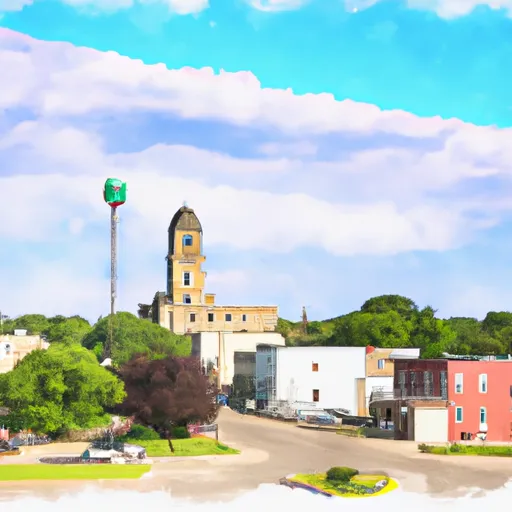°F
°F
mph
Windspeed
%
Humidity











Knierim, Iowa is a small rural community located in Calhoun County. The region experiences a humid continental climate with four distinct seasons. Summers are warm and humid, with average temperatures ranging from 70°F to 90°F (21°C to 32°C). Winters are cold, with temperatures dropping between 10°F to 30°F (-12°C to -1°C), and snowfall is common.
The hydrology of Knierim is primarily influenced by the nearby Raccoon River. The river serves as a vital water source for the region and offers opportunities for outdoor activities such as fishing, boating, and canoeing. Anglers can find various species of fish, including catfish, bass, and walleye, in the river's waters.
In addition to the river, Knierim is surrounded by picturesque natural landscapes, making it an ideal place for outdoor recreation. The area boasts numerous parks and trails for hiking, biking, and camping. Outdoor enthusiasts can explore the beautiful countryside, enjoy birdwatching, or simply take in the serene beauty of the Iowa landscape.
Overall, Knierim offers a pleasant climate, access to the Raccoon River, and various outdoor recreation opportunities, making it an attractive destination for nature lovers and those seeking a tranquil rural experience.
Weather Forecast
Knierim receives approximately 833mm of rain per year, with humidity levels near 84% and air temperatures averaging around 9°C. Knierim has a plant hardyness factor of 5, meaning plants and agriculture in this region thrive during a short period during spring and early summer. Most plants will die off during the colder winter months.
Regional Streamflow Levels
8
Cubic Feet Per Second
28
Cubic Feet Per Second
63
Cubic Feet Per Second
205
Cubic Feet Per Second
Nearby Camping
| Camping Area | Reservations | Toilets | Showers |
|---|---|---|---|
| Lake Hanska County Park | |||
| Eagle Nest Park | |||
| Lake Marion Co Park | |||
| Truman City Park | |||
| Flandrau State Park | |||
| Lake Allie Co Park |



